You are currently browsing admin’s articles.
Tags: apple, At School, For the Classroom, ipad, Videos
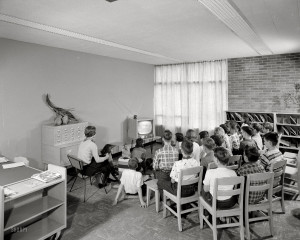 A recent Phi Delta Kappan article caught my eye about using TV in the classroom: Teaching with television: New evidence supports an old medium, by Deborah L. Linebarger.
A recent Phi Delta Kappan article caught my eye about using TV in the classroom: Teaching with television: New evidence supports an old medium, by Deborah L. Linebarger.
In the article, Linebarger cites research affirming that TV can be used effectively in the classroom – especially where it supplements, rather than supplants, good instruction.
There are some obvious benefits in having videos that enhance a lesson. I recently was watching Fabric of the Cosmos – a four-hour series on PBS featuring Brian Greene. The third episode (Quantum Leap) showcases the weirdness of the quantum world. In just 20 engaging minutes, Greene is able to beautifully illustrate concepts that I could never replicate in class (and it’s free online too).
But Linebarger also reveals a reluctancy that teachers might have in using TV:
Those who choose to air video content in the classroom risk being called lazy, if not accussed of educational malpractice.
This brings to mind the movie Bad Teacher, where Cameron Diaz exhausts her supply of “education-like” movies so she doesn’t have to prepare a lesson. While this hyperbole is funny, it speaks to the fear that some educators might have in letting TV do the teaching for them.
So how can teachers use TV (perhaps the term video is more appropriate) effectively to supplement good instruction? Here are some suggestions:
Watch Segments. Many full-length videos are not appropriate for viewing in the standard 50 minute classroom. However, with digital media on DVDs and online, it is easy to watch shorter segments – specifically tailored to your classroom content. Paid services like Safari Montage and Discovery Education Streaming make this even easier, as their videos already are ‘chopped’ up for this purpose.
Use the Remote. When watching longer videos, I think it is important to use the pause button often. Not only does this insert physical breaks for the students, I can take the time to discuss the curricular importance of a scene and use informal assessment techniques to gauge student learning.
Don’t turn down the lights. While it is tempting to turn down the lights while watching content, this is a sure-fire signal for many students to disengage from the lesson. If possible, try to have some lighting on to remind students that watching the video is an active experience.
Stay current. Amassing a collection of videos as permanent features in your curriculum might be enticing, but it can encourage you to stick with outdated and irrelevant content. Take time to preview new content that might replace older content (however, there are times when I specifically use outdated content in science as a way to discuss how science changes).
Above all, make sure to evaluate the purpose of using any video in the classroom. If the video truly enhances learning by supplementing good instruction, then it can be a wonderful educational resource. Linebarger sums it up nicely in her closing remarks:
Television can never replace teachers. But Teachers can use television well, taking advantage of its strengths.
Tags: Discovery Education, For the Classroom, PBS, TV, Videos
at right). Of course, everyone knew that it WAS an M&M, and that a mistake was made when the candy was made. Nonetheless, I started thinking about when typos matter and when they don’t.
Our district has been implementing a writing initiative, realizing the importance of writing and communication in our students’ futures. Personally, I would have advocated for a “communication initiative” over a writing initiative.
As many educators are seeing “texting” language crop up in assignments, some of the immediate implementations in this initiative have been to make sure that students monitor their writing for spelling errors and common grammatical errors. While these are definitely important components of good writing, are they more important than properly conveying a message in their writing?
Furthermore, if students can use tools to correct their spelling and grammar, then are we wasting valuable classroom time focusing on these skills?
It made me think about a conversation with Dr. Theo Gray about students using Wolfram Alpha (a computational knowledge engine) to solve math and science problems. He mentioned that it is important that students learn the fundamental concepts, but that rote skills become less important if a tool can do them for you.
Should we apply this to spelling and grammar in schools?

For more than a decade, I have made a fire-breathing pumpkin for my chemistry students around Halloween (see footage from 2008). After seeing recent posts about making a Flamethrowing Jack-O’-Lantern, I have decided to share how it’s done. It’s really quite simple, once you have all of the equipment.
Watch the Video:
1. Obtain the Equipment:
- pumpkin
- candle
- carving utensils
- rubber tubing/funnel (or turkey baster*)
- cork-borer (same size as rubber tubing)
- lycopodium powder*
The lycopodium powder is the hardest to obtain (unless you are a science teacher). I ordered mine from Flinn Scientific.
2. Carve the pumpkin and insert the candle
I like carving a large mouth and eyes (remember the flame comes through every hole). I used a bunsen burner to add a little detailing.

3. Bore a hole in the back of the pumpkin
Ideally, this should be a few centimeters above the top of the candle. If it’s too low, then you’ll blow the candle out. Insert the tubing through the hole, and attach the funnel on the end.
4. Add the Lycopodium powder and BLOW!
(*during trick-or-treating tonight, I substituted the hose/funnel for a turkey baster, which worked quite well)
The demo works because Lycopodium powder has a high surface area. When aerosolized, it easily ignites with a flame. This is actually similar to what happens in a grain elevator explosion:
The work there also tends to be dangerous. Farmers take their grain to elevators to be stored, and sometimes processed, before it is marketed or sold. Fine, highly combustible grain particles flow through the buildings as corn and other grain are moved. A spark from equipment or perhaps a cigarette can ignite the dust, sending a pressure wave that detonates the rest of the floating dust in the facility.
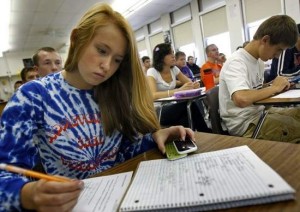 My local newspaper recently interviewed me about cheating and cell phone use in the classroom (read the article). While cheating and scientific integrity are important topics to talk about later, I have been thinking a lot about my new cell phone policy this year.
My local newspaper recently interviewed me about cheating and cell phone use in the classroom (read the article). While cheating and scientific integrity are important topics to talk about later, I have been thinking a lot about my new cell phone policy this year.
Overall, I am confident that allowing cell phones in the classroom was the right decision. I encourage students to use their phones appropriately in labs and lessons, and even prompt them to search for answers (they seem to like texting queries to ChaCha most) There is no more hiding (at least much less) their texting shame underneath their desks. While I have had to address using their devices at appropriate times, I haven’t had to confiscate a phone yet.
While the reporter got most of interview correct from what I said, the best quote came from my assistant principal:
We know they’ve got them, so it’s just teaching them to be responsible with them.
And that’s the idea. I trust that my students realize the power of their devices, and that they can make decisions to use them in an appropriate manner.
Most importantly, I think that students feel more respected.
ACT Science. Scary stuff, right? You can’t even use a calculator! (because you really don’t need one).
You can be tested on biology, botany, zoology, microbiology, ecology, genetics, evolution, atomic theory, inorganic chemical reactions, chemical bonding, reaction rates, solutions, equilibrium, gas laws, electrochemistry, organic chemistry, biochemistry, and properties, states of mattermechanics, energy, thermodynamics, electromagnetism, fluids, solids, light waves, geology, meteorology, oceanography, astronomy, and environmental sciences!
But in actuality, the ACT Science reasoning section is more about interpreting data, graphical analysis and weeding through scientific jargon than actual science content. Sure, a broad knowledge base in each content area will help you cruise through the question more quickly, but simple reasoning and analysis will get you the right answer every time.
The best way to prepare for the science section is to review your basic graph reading skills and make sure you are still aware of the concepts that surround them (John Smith).
Here are some general tips:
- There are 40 questions to answer in 35 minutes, which equates to less than a minute per question. Skip hard questions and come back to them later if needed.
- Read the questions BEFORE reading the narrative.
- There are usually 2 bad answers – cross them out, and focus on the two best choices. That leaves only a 50/50 chance.
- Don’t leave anything blank – there is no penalty for guessing.
- Mark up your test – take notes, highlight sections in the passage, and sketch on your graphs.
- Don’t get confused by the terminology. Focus on the reasoning and analysis.
-
Look for extremes in charts and graphs. Most graphs will require you to estimate your answer.
-
Be aware of different viewpoints – especially in developing hypotheses and drawing conclusions.
Recently, a local school district decided to start charging teachers for personal use of “refrigerators, microwaves, coffee makers, pizza ovens, toaster ovens and toasters” in an effort to save over $12,500 per year in energy savings (read full story).
The cost for using a coffee maker? $10. While this is a seemingly small fee for a convenience, maybe there is an alternative solution to help save money (and energy) and keep everyone happy.
Energy Efficiency: Not all coffee makers are created equally in their energy consumption. Why not choose an energy efficient model? A thermal coffee maker (like the Cuisinart DTC-975) uses less energy than a standard coffee maker, as the brewed coffee is stored in an insulated carafe. Thus, there is no energy wasted heating a burner underneath a glass pot.
Economy of Scale: Why not consolidate a few coffee makers into fewer, more centralized pots? On my floor alone, there are at least 3-4 coffee makers that are used daily and often make only half pots each. Having fewer pots that make a full pot at a time would reduce multiple uses of heating elements. It makes sense to avoid single-cup brewing machines.
Opportunity to Learn: Combining both of these ideas could even turn into a class project, where students could use wattage meters (like the Kill a Watt meter) to monitor coffee makers to identify the most energy efficient models and brewing practices.
Tags: At School, coffee maker, edutopia, energy efficiency, For the Classroom, Resources/Recycling
While attending the WSST Annual Spring Conference this last weekend, I made sure to check out the Outstanding Science Trade Books for 2010 session. Highlighting fantastic science books from Science Books & Films (SB&F) and NSTA’s Outstanding Science Trade Books, the organizers of the session also brought in hundreds of books from the collection housed at UW-LaCrosse.
Watching other people scribbling down book titles on scratch paper, I realized that there must be an easier way to remember these fantastic books (for my kids and kindergarten teacher wife). I simply opened the Amazon Mobile app on my Blackberry, toggled to the Amazon Remembers tab, and started taking pictures of book covers. They were instantly sent to my Amazon.com account, which promptly found all 13 book titles and displayed them in “Your Lists” in my Amazon account (see below). Of course, I also got prices and a way to order each book.
Granted, I was searching for books – an Amazon specialty. Still, this app has a lot of potential in that it identifies products from a crude smartphone picture. Think about how Amazon could use this app to simplify our lives in making products that rely on personalized user input. For instance, Amazon could make its own unviersal remote control. The user could simply take pictures of all of their devices (TV, DVR, Blu-Ray player, etc), send them to Amazon and could send you a personalized remote – already pre-programmed.
Tags: amazon.com, conference, science books, smartphone
Here is a compilation of demonstrations I do for “Combustion Day”, which capitulates three days of demonstrations to identify the five main types of chemical reactions. DO NOT TRY THESE AT HOME.
Combustion Day 2010 from Brian Bartel on Vimeo.
Tags: chemistry, combustion, Experiments, Science Education
Using video clips in the classroom is nothing new – a couple companies have even made a business model for this educational niche. But Hollywood movies can also have educational value, especially when trying to find errors and discrepancies within them. To assess some basic properties in matter in my chemistry class, I have been utilizing movie clips for help.
When teaching density, I use a clip from Indiana Jones: Raiders of the Lost Ark [You Tube Clip] whereby Indiana tries to swap a gold idol with an equivalent VOLUME of sand. Obviously, Indiana gets the mass wrong, as sand and gold have quite different densities. A similar exercise can be found at Glencoe Science.
I’m Melting?
Moving on to chemical versus physical change, I get a little help from the Wicked Witch of the West in the Wizard of Oz [You Tube Clip]. In the movie, the witch clearly claims that she is melting. Using clear evidence in the film, I ask the students to defend if she is really melting, or if she is chemically reacting, sublimating or vaporizing.
Others
Of course, movie clips can be used in many other areas of science (see below) and in other disciplines. Imagine having students compare inconsistencies in the Hollywood version of a classic novel to its literary original. How do you use movie clips in class?
Tags: chemistry, Classroom Activities, For the Classroom, movies, quiz, Science Education, Videos

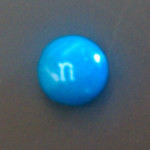
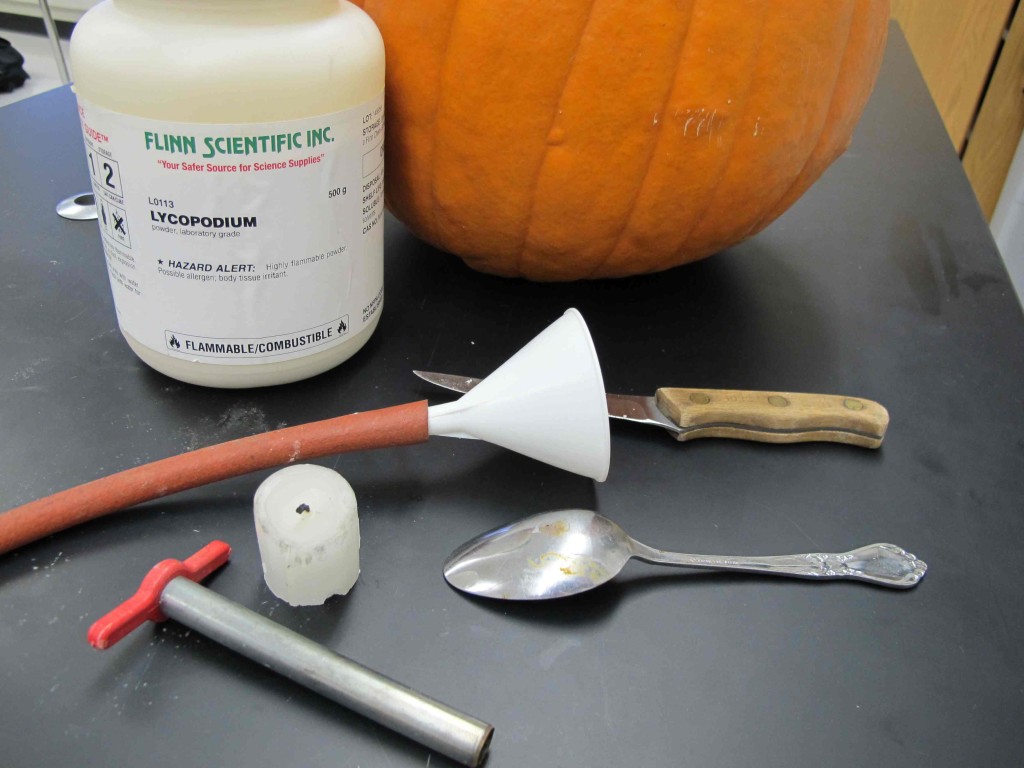
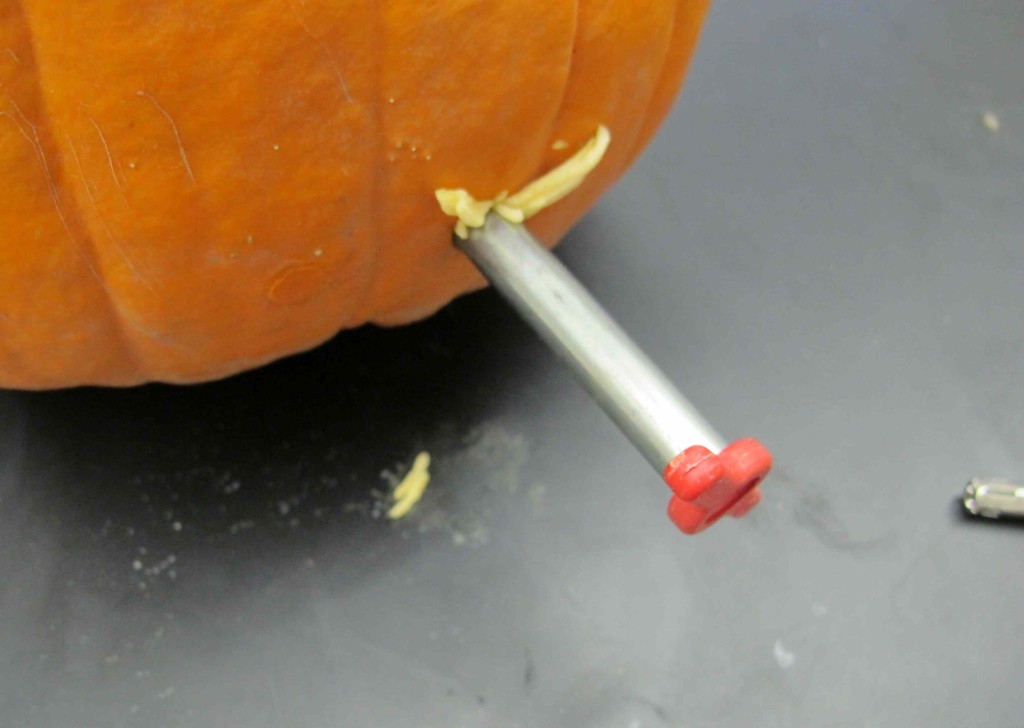
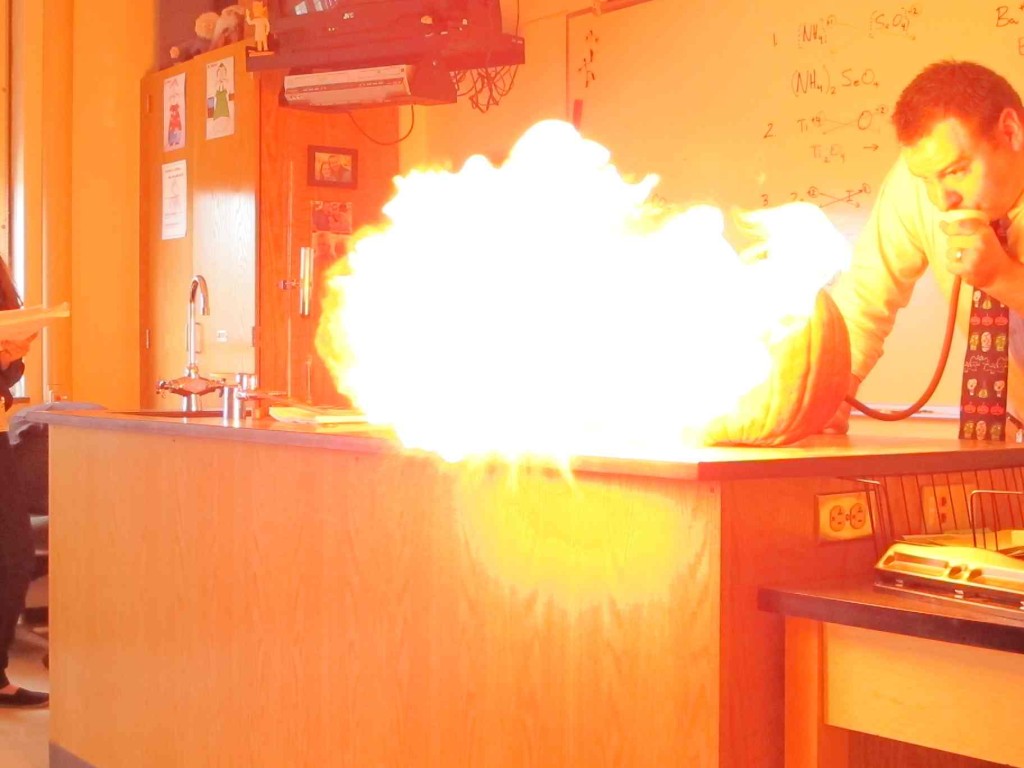
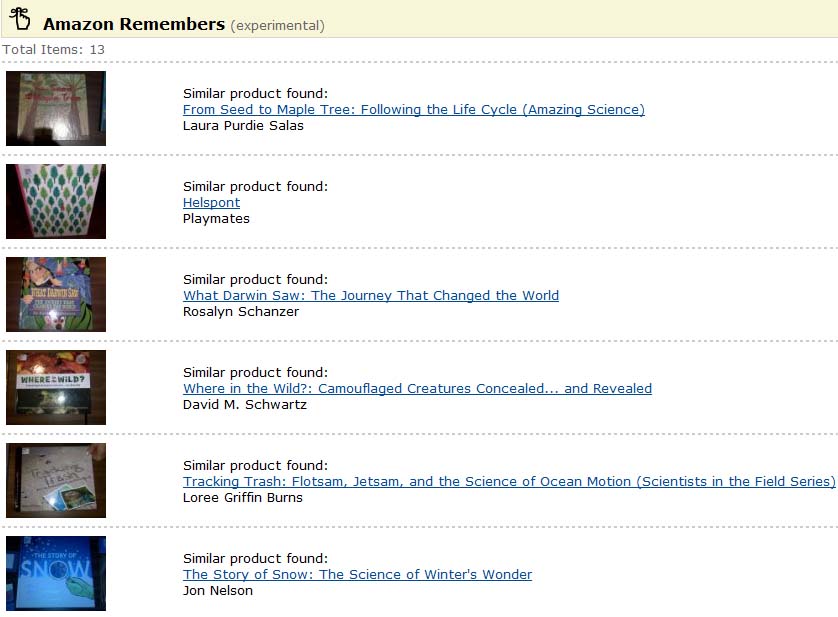

Recent Comments